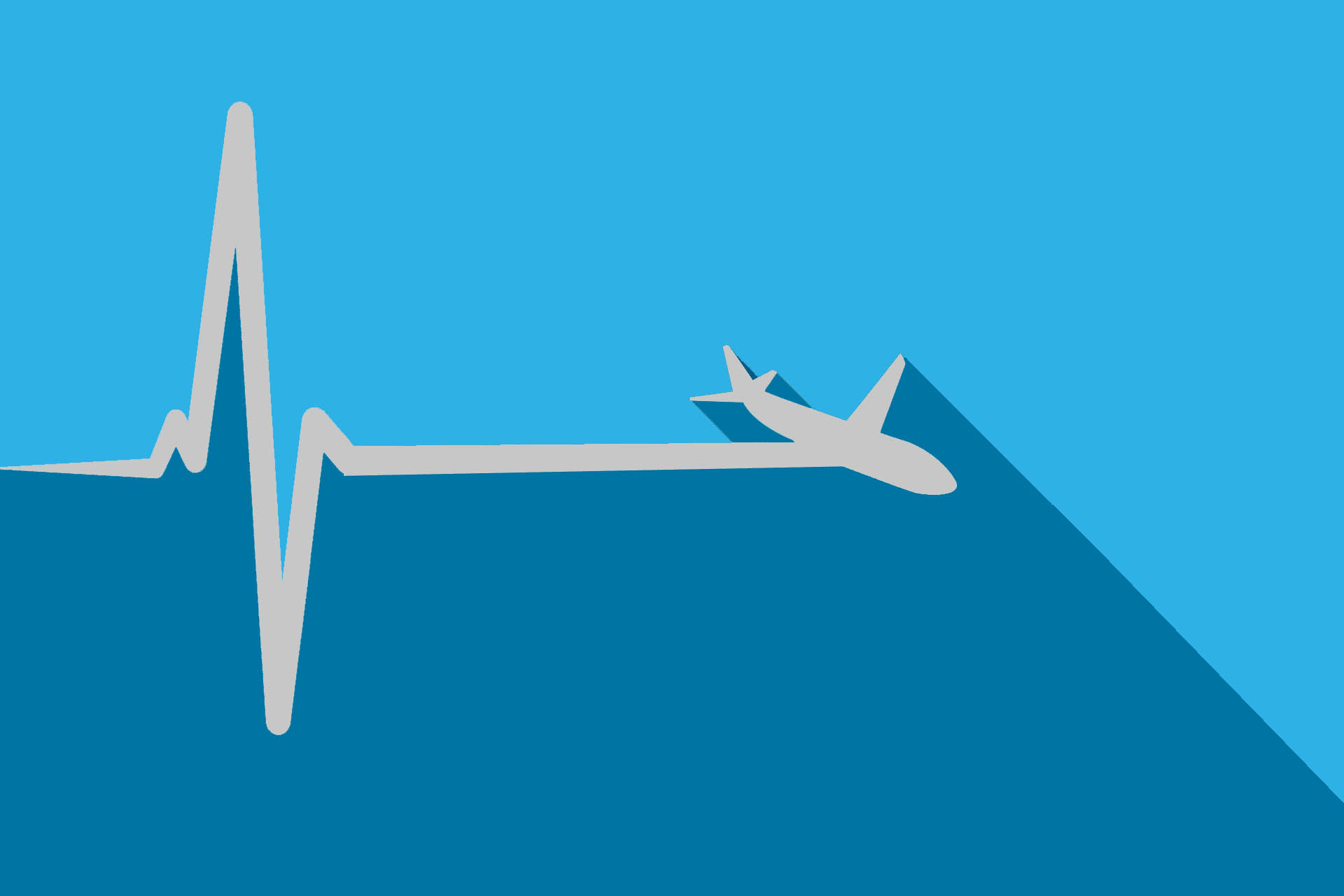Strong together: leadership and followership
A look at the balance of leadership and followership
As a coach and consultant, I have a focus on guiding and developing leaders. In the brave new world of New Work, leadership is seen as an important aspect, while followership tends to be neglected in many areas. Aviation is much more advanced in this respect; there, people are not only sensitised to leadership, but also to followership. Why? Because even gods are powerless if no one believes in them. And because it has been clear since the end of the 1970s that people and teams play a key role that should not be underestimated when it comes to managing the dynamics and complexity involved in jetting around the world rather quickly in rather heavy tin cans. Consequently, in the course of the human factors training, not only leadership but also followership is trained.
What is followership?
Traditional leadership styles are based on hierarchical authority and obedience. The superior makes decisions, distributes instructions and the employees implement these instructions. There is a clear hierarchy in which managers control employees and communication is mainly top-down. The emphasis of such leadership is on efficiency, discipline and the performance of tasks based on the division of labour.
Modern leadership styles – today called (also here in the blog post) leadership or also new leadership – are based on the principles of teamwork, participation and employee development. In contrast to traditional leadership, (New) Leadership emphasises collaboration, the exchange of ideas and joint decision-making. Accordingly, the leader is not the centre of attention, but rather acts as a supporter for the team. It encourages employees to use their strengths and skills and takes on an empowering role to help them in their personal and professional development.
So what is followership? Followership is the other side of the leadership coin. It looks at the behavior of employees in the wake of leadership. It is an active role that involves a co-thinking, co-creating, team-oriented and self-reliant attitude. It is based on a positive relationship between leader and employee, on trust and psychological security. It creates a sense of togetherness that helps to achieve common goals and support each other. Sounds good, doesn’t it?
Taking on a great deal of responsibility
Whenever I had a group of young, prospective flight attendants in front of me during my time as a human factors trainer, I had to think back to when I myself sat in the 134th flight attendant training course at Condor. It was exciting, interesting and sometimes even shocking. Looking back, I know that the craft is learned quickly. Physically, flight attendant work is sometimes very strenuous and when people with a regular daily routine say they are tired after work, this is certainly a different form of tiredness than the absolute physical exhaustion after a strenuous night flight combined with jet lag. But this is also within the realms of possibility, otherwise I would certainly not have flown so many years myself. There is, however, one aspect that I was not aware of at the time, in my early twenties, but which became clearer and clearer to me in the years that followed:
- As a good crew member you have to fit into the hierarchy and
- at the same time take on a great deal of responsibility.
Every single crew member takes personal responsibility for the greatest good of our world: human lives! To be aware of this great responsibility and to live up to it in daily activities is the real challenge for these magical young people whom I have the privilege to train on a regular basis.
Even as a trainer in aviation, it was not so easy to make this rather abstract responsibility tangible. To this day, I like to work with concrete examples.
An example from aviation
March 10, 1989. Sonia Hartwick has been working as a flight attendant for Air Ontario for two years. An attractive woman, about mid-twenties, with blonde hair, blue eyes and a bright smile. Together with her colleague Katherine Say, Captain John Morwood and First Officer Keith Mills, this is to be the last day of a multi-day assignment. Captain Morwood is looking forward to starting his holiday with his family the next day and everyone else is looking forward to being home.
On this day, a Fokker F28 is scheduled to fly from Thunder Bay to Winnipeg with a short stopover in Dryden. Nothing big really. Arriving in Dryden, the plane is already delayed and the delay seems to grow further. A circumstance that always means additional stress for a crew. Chasing the flight schedule is no joy. An additional stress factor for the pilots is that it was decided to fly the aircraft with a defective Auxiliary Power Unit (APU), a kind of auxiliary power unit needed to start the engines and provide power on the ground. Actually, a defective APU is not a leg-break and I have often been on a flight with such a defect myself. At airports there are ground power units that replace the APU. So all is well. However, Dryden airport is so small that it cannot provide ground power units on that day. To be able to take off again at all, the pilots have to keep one of the two engines running during the entire ground time. They have to refuel and board while the engine is running. Today such a procedure would be forbidden, back then it was acceptable. For the pilots, especially the captain, this means a lot of extra stress that day.
In the cabin, Sonia and Katherine do their utmost to hide this stress from the guests and to compensate for their displeasure regarding the delay. While the plane is being checked in at Dryden, the weather suddenly changes and it starts to snow. The stress increases as the delay threatens to grow further. I don’t know if Sonia has family to look forward to, children waiting for her, but I know how much you want to get off work on time on days like this.
Captain Morwood also wants to get home and so he decides to hurry, close the doors, and taxi towards the runway. In doing so, however, he overlooks the fact that ice is forming on both wings due to the change in the weather situation. Negligent, one might think. But perhaps you too have overlooked something in a stressful situation? Maybe Captain Morwood’s mental model doesn’t fit that there would be ice either. He knows that there is no way for him to de-ice in Dryden. De-icing requires shutting down both engines, which he would not have been able to restart because of the faulty APU and the lack of a ground power unit. So everyone would have stayed in Dryden for the time being until an appropriate power unit was flown in. Following the old motto “It can’t be what may not be!”, perhaps even his perception played a trick on him that day. A very well-known phenomenon.
However, there are others whose perception works and who see the ice. A guest approaches Katherine about the ice. She reassures the guest because she assumes that the wings are de-icing themselves. In fact, this is dangerous half-knowledge! It is only the tips of the wings that are heated and can therefore be de-iced. She must have got something mixed up!
Sonia knows better and is very worried, but decides not to speak to the captain.
This is how things take their course. Captain Morwood, firmly trusting that everything is okay and under time pressure, initiates the take-off. At first the plane takes off, but then it loses altitude and crashes into the adjacent forest. That day, 24 people lose their lives, including Sonia’s colleague, her captain and her first officer.
The question of “why”
In the aftermath, Sonia was asked why she had not said anything. Her explanation is as understandable as it is sad. Sonia describes that she was afraid that word might get out that she was interfering with the pilots’ work, criticising the captain. She was supposed to be the one responsible for the tea and coffee. Sonia was afraid that she would be less popular or respected among her colleagues, maybe even get worse flight schedules.
I wondered more than once if Sonia had thought that her colleagues and all the other people would still be alive if she had been braver, if she had taken responsibility, if she had spoken to the captain. What are flight plans?
To this day, even beyond my beloved planes, she keeps me aware of what it means to take responsibility, to be a good team member, a good follower. Also because I can understand her fears as a young woman so well. In my first years of travelling, I wanted one thing above all: to belong!
Maybe you have also kept quiet at some point, kept silent for fear of becoming an outsider, of no longer being liked. Humanly understandable, but is it also responsible towards customers, colleagues, jobs or the business model?
The interaction of leadership and followership
Leadership and followership are two central factors for successful cooperation in organisations. For a balance between both factors, some ingredients are very important:
- Employees must be able to influence what they should be responsible for.
- Employees must be allowed to make their own decisions. To achieve this, managers must want to hand over responsibility and offer employees freedom.
- And employees must experience psychological security, i.e. they are also allowed to make mistakes.
Companies often do not create the necessary conditions for employees to really take responsibility. In some organisations, I even observe a kind of pseudo assumption of responsibility, which rather reminds me of determining in advance who is to blame if something goes wrong. Of course, companies cannot avoid defining strategic guard rails – e.g. through compliance rules, regulations and principles – in order to steer the employees’ will to shape things in an orderly manner, but those who define decision-making spaces so narrowly that in fact no decisions with even a little consequence can be made need not be surprised if employees do not become followers here.
In addition, it is true that those who make decisions take risks. But those who share their thoughts or observations, who act actively, open the door for reactions and interaction. A risk does not always have to be as elementary as in Sonia’s example, a thought does not always have to be disruptive, what is important is that those involved should be aware that ideally one supports the other. Even if someone is responsible for tea and coffee, that person may very well make a significant contribution to the success of an undertaking or the solution of a problem.
Conclusion
The balance between leadership and followership does not fall from the sky. It has to be developed, and for this to happen, organisations need
- a culture that makes it possible to take responsibility,
- parameters that make it possible to speak up, to speak out and to be critical,
- and a sensitisation for balance, which, however, demands a lot not only from managers but also from employees.
I work on such a balance with leaders in all areas and at all levels. In order for people to accept this space that is offered to them, one often has to accompany and coach them. There are always reasons to be silent. However, we are in a world that increasingly demands personal responsibility and it is only fair that we prepare people for this responsibility, sensitise them and take them by the hand to some extent.
Notes:
If you like the post or want to discuss it, feel free to share it in your network.
If, after reading this food for thought, you are interested in delving deeper into the topic and following Constance Ratazzi-Nelles on her journey from aviation to business, feel free to visit her blog Food for Thought. Here you will find new impulses every second Sunday on what Ms Ratazzi-Nelles calls Human Factors Consulting in reference to aviation.
Constance Ratazzi-Nelles has published two more posts on the t2informatik Blog:

Constance Ratazzi-Nelles
Constance Ratazzi-Nelles has her professional roots in aviation, where she worked for 21 years, first as a cabin crew member and then as a human factors or crew resource management trainer. In 2019, she started her own business as a part-time trainer and human factors consultant with her platform Impuls, with which she brings the approaches from human factors training in aviation into the business world with a special focus on the connection between subjective perceived psychological safety and high performing teams.
At the end of 2020, she decided to leave aviation. Since then, she has worked as a Change & Transformation Consultant for an international bank and has specialised in the fields of executive coaching and resilience, i.e. stress and anxiety management, burnout prevention and consciously shaping work-life balance in her self-employment as a coach and consultant.
As a keynote speaker, she presents the topic “Psychological Safety & High Performance – What the business world can learn from aviation”. As a guest lecturer, she also presents this topic annually at the Faculty of Economics at Maastricht University as part of the Master’s programme.

